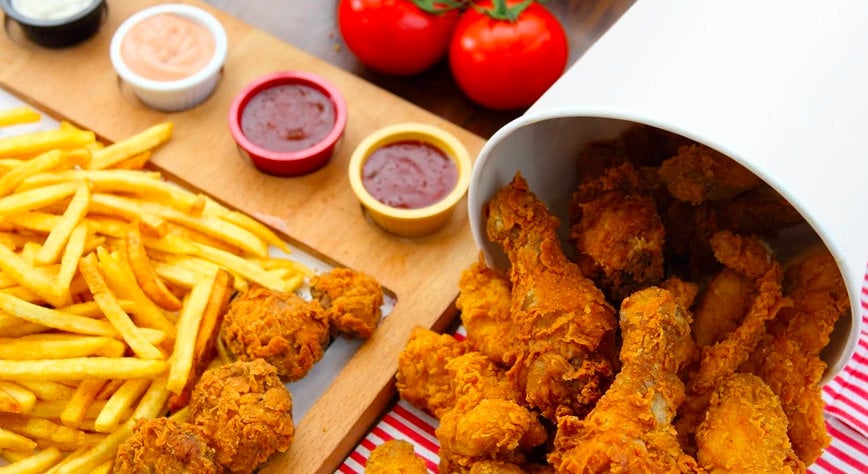www.industry-asia-pacific.com
22
'23
Written on Modified on
MANAGING THE QSR EXPANSION IN SOUTHEAST ASIA
Marel explains how to supply QSR chains with poultry products according to specifications.

In Southeast Asia, QSR chains like KFC McDonald’s, Texas Chicken and Jollibee all have expansion plans. In addition, chicken products enter the markets via Korean fried chicken chains, while BHC and Bonchon are rolling out more outlets. Not all these companies have their own processing plants in the country of operations, which means that processors in a larger region are getting more orders in larger volumes and with more product diversification. These volumes already started recovering during the pandemic, when QSRs started home deliveries. Now the volumes continue to grow thanks to increasing in-store dining, combined with home deliveries.
For processors, the main advantage of the growing demand is the increasing volume while having to supply only a limited diversity of products. It’s about producing many of the same. Besides, processors qualified to supply QSRs are likely to have an improved reputation in the market, which could attract other potential customers.
Responding to growth
To handle this growth in QSR orders, processors seek the best ROI and the highest flexibility by either installing new equipment or revamping existing systems. A key starting point for processors is that they must be able to respect very strict quality and weight specifications. All products supplied to the food chains need to be as uniform as possible, also over time. These specifications may vary by QSR chain and can also differ by country.
Therefore, adapting equipment in a processing plant ideally starts with an in-depth conversation between the supply chain people of the QSR, the poultry processor and Marel, to really understand the requirements.
Line flexibility needed for QSR supply
When starting to supply QSRs, a review of the processing plant from start to end is mandatory. In primary processing, the line has to handle the lighter flock weights specified by the QSR chains. Usually, not the complete volume of the processor meets these requirements, so the evisceration equipment must be able to handle both the lighter QSR flocks and the heavier ‘regular’ broilers. Marel’s Nuova evisceration systems certainly have the flexibility to cope with a wide range of product characteristics.
After chilling, a whole bird grading process is needed to automatically select the right birds with the right weight range and quality for allocation to the right downstream processes. SmartWeigher weighing system and IRIS inline vision inspection are perfect tools to support the grading process with hard facts about weight and quality.
QSR cut-up must be modular
For the cut-up process, it is again all about the specifications. The line should offer the flexibility to switch between different requirements. A cut-up line that can only supply products according to Jollibee specifications will not work when KFC products or other cut-up products need to be produced. Such flexibility can, however, easily be achieved by integrating dedicated modules into the cut-up line, which can be engaged or bypassed when the requirements change. A great example is the keelbone cutting module, which can provide an additional breast portion when required. Any QSR partition of the chicken in multiple pieces is possible using the appropriate modules in Marel’s ACM-NT line.
Quick change-overs
Further downstream, in the coating process, flexibility is crucial too, as QSRs are shifting towards more local product diversification, homestyle appearance, premium products, etc. Therefore, line change-over time must be minimal to secure the best ROI. Marel provides solutions such as the RevoBreader to switch from a drum breading mode for homestyle products to a flatbed mode for homogenous coating without needing a machine exchange. Combined with other modules that can quickly be engaged or bypassed in the Coating Line, this allows for highly flexible, voluminous production of a wide range of products.
For the injection, marination and tumbling and coating processes, product quality and uniformity are also key. The line needs to have the ability to produce high throughputs with optimal consistency.
Finally, strict requirements regarding traceability and food safety must be met. Marel can support this with a complete manufacturing execution system. This MES software collects real-time information from the equipment on the factory floor to trace each product, as well as its weight and quality characteristics, from live bird receiving up to final dispatch.

Portioning boneless QSR products
In addition to bone-in products such as wings, drumsticks, and 8/9-piece buckets, QSRs also offer a significant amount of boneless products. Such products made from fresh deboned muscle meat are in particularly high demand today. Despite nuggets remaining popular – some QSR chains now require whole muscle meat only for their nuggets – strips cut from breast and thigh muscle meat are emerging as the new rising stars. Burger products featuring breaded strips are rapidly becoming best sellers and potentially setting a new trend.
These boneless products need to be portioned. When doing so, optimal use of raw material and preventing waste is mandatory. Marel possesses expertise in producing poultry strips and cubes with the desired characteristics and quality, regardless of the type of raw material used. The inline solution, centered around the I-Cut 122 TrimSort portion cutter, operates automatically without manual labour needed. It has the capability to generate high volumes of boneless products that meet QSR specifications, while minimizing giveaway.
The portioning system can also have a very flexible setup. Processors who don’t produce strips day-in-day-out, want to generate other types of products too. That can be done by adding a SmartSplitter, a SensorX, a RoboBatcher or even another component to the line. In this way, the same portioning line setup can also produce burgers, tenders and schnitzels.
www.marel.com

